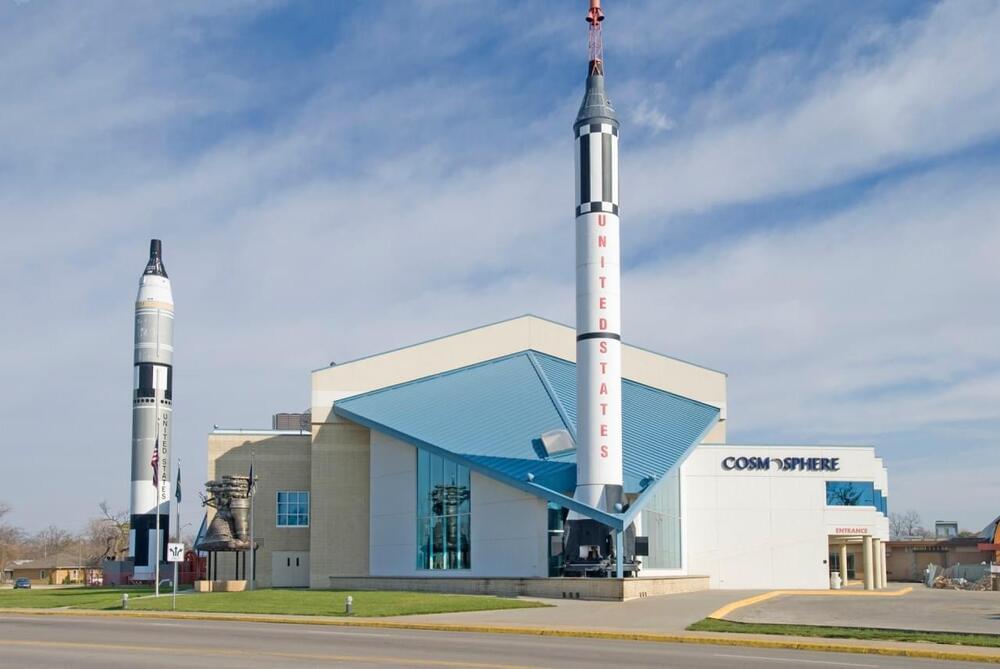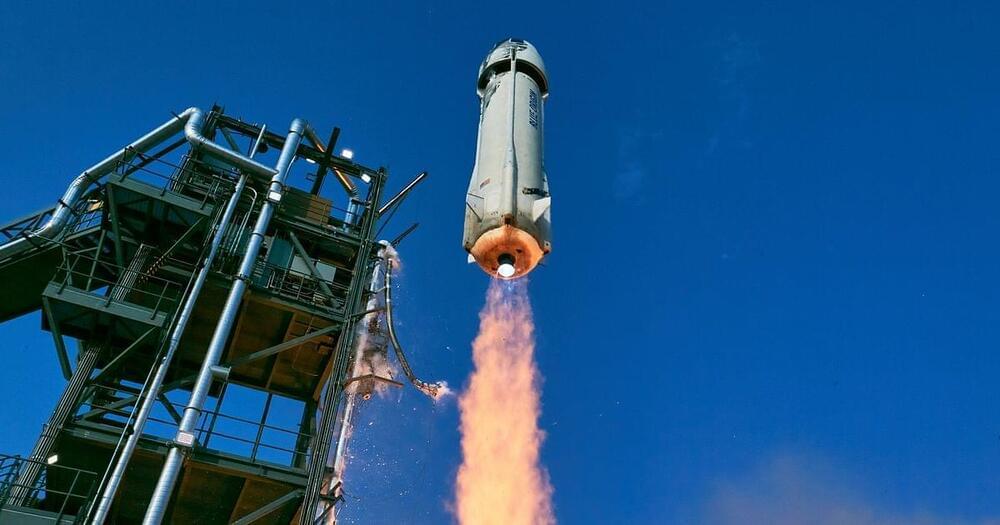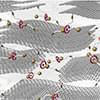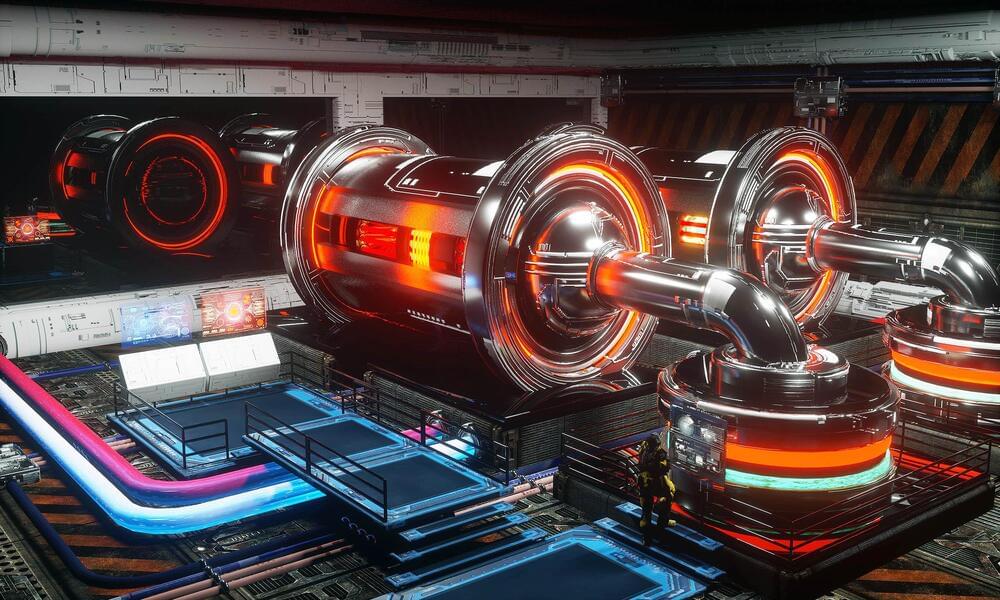SpaceX’s Starship is a revolutionary rocket that aims to achieve full reusability and enable multi-planetary life, with the potential to launch a new ship every couple of hours, dramatically revolutionizing space travel Questions to inspire discussion What is SpaceX’s Starship? —SpaceX’s Starship is a revolutionary roc.
Category: space travel – Page 62
Warp drives could generate gravitational waves
Will future humans use warp drives to explore the cosmos? We’re in no position to eliminate the possibility. But if our distant descendants ever do, it won’t involve dilithium crystals, and Scottish accents will have evaporated into history by then.

Cosmosphere gifted rocket engine from SpaceX
“The Cosmosphere is grateful to receive a flown Merlin engine from SpaceX,” said Jim Remar, Cosmosphere president and CEO. “The inclusion of the engine in our museum reaffirms the fact that the Cosmosphere houses one of the greatest collections of space exploration hardware.”
The Cosmosphere has been undergoing renovations since January. The Merlin engine will go on display in the new rocket gallery, which is expected to open in late 2024.
For more about the renovations underway at the Cosmosphere or to see upcoming events and programs, click here.



Strange Kinetics Shape Network Growth
A connection between time-varying networks and transport theory opens prospects for developing predictive equations of motion for networks.
Many real-world networks change over time. Think, for example, of social interactions, gene activation in a cell, or strategy making in financial markets, where connections and disconnections occur all the time. Understanding and anticipating these microscopic kinetics is an overarching goal of network science, not least because it could enable the early detection and prevention of natural and human-made disasters. A team led by Fragkiskos Papadopoulos of Cyprus University of Technology has gained groundbreaking insights into this problem by recasting the discrete dynamics of a network as a continuous time series [1] (Fig. 1). In doing so, the researchers have discovered that if the breaking and forming of links are represented as a particle moving in a suitable geometric space, then its motion is subdiffusive—that is, slower than it would be if it diffused normally.

Cells grown in microgravity show 3D structures that could be used in medicine
Humanity is on the verge of entering a new era of space exploration, with the Artemis III mission planning to return humans to the moon in 2026, for the first time in 50 years. Not only will Artemis see a woman and a person of color walk on the lunar surface for the first time, but the week-long mission to the south pole of the moon will begin a period of longer and longer stays in space.

Strengthener for graphene
Grapene’s unusually high conductivity and favorable mechanical properties could further the development of flexible electronics, new batteries, and innovative composite materials for aeronautics and space flight. However, the development of elastic and tough films remains a challenge.
In the journal Angewandte Chemie (“A Stretchable and Tough Graphene Film Enabled by Mechanical Bond”), a research team has now introduced a method to overcome this hurdle: they linked graphene nanolayers via “extendable” bridging structures.
Cartoon representations of the fabrication process of RBG films and toughening mechanism of mechanical bond. Upon applied force, the hidden chain of [2]rotaxane was released due to intramolecular motion, resulting in an increased interlayer slip distance. It follows that the mechanical performance of RBG films were improved when mechanical bond was introduced.

Curvature propulsion and the future of intergalactic space travel
If you are a fan of reading or watching science fiction, you have definitely encountered the concept of curvature propulsion — one of the most fascinating and speculative frontiers in theoretical physics and advanced space travel.
Rooted in Einstein’s general theory of relativity, it proposes innovative methods to manipulate spacetime itself to achieve faster-than-light travel without violating the laws of physics.
General relativity, formulated by Albert Einstein, provides the theoretical foundation for curvature propulsion. This theory describes gravity as the curvature of spacetime caused by mass and energy.
Elon Musk Speaks: All Starship Tiles will be Replaced After Flight 4 Issues!
Elon revealed details about Starship Flight 4 outcome, Flight 5, and beyond during a gaming livestream in X.
Video Credit: Elon Musk.
00:00 Starship Flight 4 Report, Fixes \& Future Missions.
13:23 Raptor Engine 3D Printing.
15:34 First Starship Mars Mission \& Colonization.
22:35 Flight 5 Booster Catch Plans.
24:05 Starship Space Telescope Project.
25:36 Flight 5 Next Month.
25:44 How Will Starships Overcome Fuel Boil-Off During Deep Space Mission?
26:26 Starship Launch From Florida Update.
26:45 Starship Will Enable Faster Trips To Mars.
27:06 How Stainless Steel Saved Starship?
Full 5-hour X live stream: https://x.com/i/broadcasts/1YpJkwgbQQdJj.
What Exactly Happened to Starship 29 \& Booster 11 in Flight 4!: • SpaceX Report Out: What Exactly Happe…
Weekly Updates: https://bit.ly/3HIQjPC
SpaceX Playlist: https://bit.ly/34wue8T
Consider Supporting on Patreon: / scientiaplus.